Scroll Page Selenium Python
Selenium With Python Tutorial 16- How To Scroll Web Pages In Selenium
Keywords searched by users: scroll page selenium python Selenium python scroll to end of page, Scroll to element Selenium Python, Mouse scroll in selenium python, How to scroll popup selenium Python, Scroll selenium Python, Selenium scroll down, Selenium infinite scroll python, Selenium scroll to bottom
Categories: Top 94 Scroll Page Selenium Python
See more here: nhanvietluanvan.com
Selenium Python Scroll To End Of Page
Scrolling to the end of a web page can be a useful feature when we want to extract data from multiple pages or perform any automated task that requires accessing elements at the bottom of the page. Selenium is a popular web automation tool that allows us to control browsers and simulate user interactions. In this article, we will explore how to use Selenium with Python to scroll to the end of a page effortlessly.
Before we dive into the implementation, make sure you have Selenium and the appropriate web driver installed. Selenium can be easily installed using pip, a package manager for Python. The supported web drivers include ChromeDriver for Google Chrome, GeckoDriver for Mozilla Firefox, and WebDriver for Microsoft Edge.
Now, let’s get started with the step-by-step guide on scrolling to the end of a page using Selenium and Python:
Step 1: Import Dependencies
First, we need to import the necessary dependencies. Besides Selenium, we’ll also import the Keys module from Selenium’s webdriver to perform keyboard actions.
“`python
from selenium import webdriver
from selenium.webdriver.common.keys import Keys
“`
Step 2: Instantiate the WebDriver
Once the dependencies are imported, we can instantiate the desired web driver. For example, if we are using Google Chrome, we’ll use ChromeDriver. Replace the `
“`python
driver = webdriver.Chrome(executable_path=’
“`
Step 3: Open a Web Page
To scroll to the end of a specific page, we need to open it using the web driver. Replace `
“`python
driver.get(‘
“`
Step 4: Scroll to the End of the Page
To simulate scrolling to the end of the page, we can use the `Keys.PAGE_DOWN` key in a loop until we reach the bottom. The combination of this key with Selenium’s `perform()` method will make it scroll down by one page.
“`python
while True:
driver.find_element_by_tag_name(‘body’).send_keys(Keys.PAGE_DOWN)
“`
Step 5: Execute JavaScript Scroll Command
The above method may not work in some cases, so we can resort to executing a JavaScript scroll command. This approach guarantees scrolling to the bottom of the page regardless of any limitations. Below is an example implementation:
“`python
driver.execute_script(“window.scrollTo(0, document.body.scrollHeight);”)
“`
Step 6: FAQs Section
Q: How does scrolling to the end of a page benefit us?
A: Scrolling to the end of a page enables us to extract data from multiple pages without manual intervention. It is especially useful for web scraping tasks or automating tasks that involve accessing elements at the bottom of the page.
Q: Can I use a different web driver other than ChromeDriver?
A: Yes, you can use other web drivers supported by Selenium, such as GeckoDriver for Mozilla Firefox or WebDriver for Microsoft Edge. Just replace the relevant driver name and the path to the driver executable in the code.
Q: What if I want to scroll to a specific position on the page other than the end?
A: Instead of using `window.scrollTo(0, document.body.scrollHeight);`, you can modify the JavaScript command to scroll to any specific position by providing the desired X and Y coordinates.
Q: Is there a way to check if we have reached the end of the page?
A: Yes, you can use the `driver.execute_script` method to execute JavaScript to check if the current scroll position is at the bottom of the page. If the scroll position remains the same after a scroll action, it means you have reached the end of the page.
Q: Are there any alternatives to Selenium for scrolling to the end of a page?
A: Yes, there are alternatives like Scrapy, Beautiful Soup, or requests-html that you can use for web scraping purposes. However, if you need a tool that can automate browser interactions and allow scrolling on dynamic web pages, Selenium is an excellent choice.
In conclusion, Selenium with Python provides a straightforward solution for scrolling to the end of a web page. By following the steps outlined above, you can automate scrolling actions and efficiently extract data from web pages. Whether you’re a web scraper or an automation enthusiast, having this capability in your Python scripts will undoubtedly enhance your web automation workflow.
Scroll To Element Selenium Python
When using Selenium with Python for web automation, there may be times when we need to scroll to a particular element on the web page. This can be useful in situations where the element is not initially visible or is located outside the visible area of the page. In this article, we will explore different methods to scroll to an element using Selenium in Python.
There are several ways to achieve scrolling functionality in Selenium, and the choice of method depends on the scenario and the structure of the web page. Let’s discuss some commonly used methods:
1. ScrollIntoView JavaScript method:
One of the most straightforward approaches is to execute JavaScript code using the `execute_script` method provided by Selenium’s WebDriver. We can utilize the `scrollIntoView` method in JavaScript to bring the desired element into the visible area of the page.
“`python
element = driver.find_element_by_id(“element-id”) # Find the element to scroll to
driver.execute_script(“arguments[0].scrollIntoView();”, element)
“`
In the above code snippet, we first locate the element we want to scroll to using any of the available techniques like finding it by ID, class, XPath, or CSS selector. Then, we use the `execute_script` method to execute JavaScript code, passing the element as an argument, and invoking the `scrollIntoView` method.
2. ActionsChains class:
Another way to scroll to an element is by utilizing the `ActionsChains` class from the `selenium.webdriver.common.action_chains` module. This class provides a way to perform complex user interactions, including scrolling, in a more structured and readable manner.
“`python
from selenium.webdriver.common.action_chains import ActionChains
element = driver.find_element_by_id(“element-id”) # Find the element to scroll to
ActionChains(driver).move_to_element(element).perform()
“`
In the code snippet above, we first import the `ActionChains` class, which allows us to create a series of actions. We then locate the element we want to scroll to. Using `move_to_element` method from `ActionChains`, we can move the mouse pointer to the desired element, which triggers the scroll if necessary.
3. Using Keys.PAGE_DOWN:
If the element is located below the visible area of the page, we can simulate the pressing of the “Page Down” key on the keyboard to scroll down.
“`python
from selenium.webdriver.common.keys import Keys
element = driver.find_element_by_id(“element-id”) # Find the element to scroll to
element.send_keys(Keys.PAGE_DOWN)
“`
In the above code, after locating the element, we use the `send_keys` method to simulate the pressing of the “Page Down” key. This action will trigger the scroll and bring the desired element into view.
4. Scroll to absolute position:
In certain scenarios, we may need to scroll to a specific pixel position on the page. We can achieve this by executing JavaScript code to scroll to a defined position.
“`python
driver.execute_script(“window.scrollTo(0, 500)”)
“`
In this code snippet, we use the `execute_script` method to execute the `scrollTo` JavaScript function, passing the X and Y coordinates as arguments, where 0 represents the horizontal position and 500 represents the vertical position. By adjusting the values, we can scroll to different positions on the page.
These are just a few examples of how we can scroll to an element using Selenium in Python. The choice of method depends on factors such as the structure of the web page, the location of the element, and the specific requirements of the automation scenario.
FAQs:
Q: Why do we need to scroll to an element?
A: Sometimes, elements on a web page are not initially visible or are located outside the visible area. Scrolling to an element allows us to interact with it, retrieve information, or perform actions that would otherwise be limited.
Q: Can we scroll to the bottom of a page?
A: Yes, we can scroll to the bottom of a page by executing JavaScript code (`window.scrollTo(0, document.body.scrollHeight)`) or by simulating the pressing of the “End” key on the keyboard (`element.send_keys(Keys.END)`).
Q: What if the element is inside a scrollable container?
A: In such cases, we may need to scroll both the main page and the container. We can accomplish this by executing JavaScript code to scroll both the page and the container, or by combining the different scrolling methods discussed above.
Q: Are there any other libraries or frameworks that provide scrolling functionality in Python?
A: Selenium is the most widely used library for web automation in Python, but there are other libraries and frameworks available, such as Pyppeteer (for headless Chrome automation) and Scrapy (for web scraping), that also offer scrolling functionality.
Q: Can we scroll horizontally?
A: Certainly! We can modify the JavaScript code in the `scrollTo` method to scroll to a specific horizontal position (`window.scrollTo(500, 0)`), or use the `send_keys` method with `Keys.ARROW_RIGHT` to simulate pressing the “Right Arrow” key on the keyboard.
In conclusion, scrolling to an element using Selenium in Python is an essential technique for web automation. By employing various methods like executing JavaScript code, utilizing the `ActionsChains` class, or simulating keyboard actions, we can bring the desired element into view and interact with it effectively.
Mouse Scroll In Selenium Python
Introduction
Selenium is one of the most popular automation testing frameworks used by developers and testers worldwide. It provides a wide range of features that help in automating web applications. One such important functionality is mouse scrolling, which allows you to simulate mouse wheel scrolling actions during your test scripts. In this article, we will explore how to perform mouse scrolling using Selenium with Python.
What is Mouse Scrolling?
Mouse scrolling refers to the action of moving the scroll wheel of a mouse up or down to navigate through a web page or document. It is a common way to view additional content when the entire page cannot fit within the browser’s visible viewport. Mouse scrolling is a vital functionality to test, as it ensures that scrolling on webpages works as expected.
Performing Mouse Scroll in Selenium Python
Selenium provides the ActionChains class to simulate various mouse and keyboard actions. To perform mouse scrolling using Selenium with Python, we need to perform the following steps:
Step 1: Import the necessary classes from the selenium.webdriver module:
“`python
from selenium.webdriver.common.action_chains import ActionChains
from selenium.webdriver.common.keys import Keys
“`
Step 2: Create an instance of the webdriver and open a web page:
“`python
from selenium import webdriver
driver = webdriver.Firefox()
driver.get(“https://www.example.com”)
“`
Step 3: Create an instance of ActionChains and perform the scroll action:
“`python
action_chains = ActionChains(driver)
action_chains.send_keys(Keys.END).perform()
“`
In the above example, we imported the necessary classes from the `selenium.webdriver` module. We then created an instance of the webdriver and opened a web page using the `get()` method. Finally, using the ActionChains class, we simulated a scroll action using the `send_keys()` method, passing the `Keys.END` value to scroll to the bottom of the page.
Common Mouse Scroll Actions
Besides scrolling to the bottom, Selenium allows you to perform various other mouse scrolling actions:
1. Scroll to the Top: To scroll to the top of a page, you can use the `Keys.HOME` value with the `send_keys()` method:
“`python
action_chains.send_keys(Keys.HOME).perform()
“`
2. Scroll Up by a Specific Number of Pixels: Use the `send_keys()` method with the `Keys.ARROW_UP` value to scroll up by a specified number of pixels:
“`python
action_chains.send_keys(Keys.ARROW_UP).perform()
“`
3. Scroll Down by a Specific Number of Pixels: Use the `send_keys()` method with the `Keys.ARROW_DOWN` value to scroll down by a specified number of pixels:
“`python
action_chains.send_keys(Keys.ARROW_DOWN).perform()
“`
4. Scroll to an Element: To scroll to a specific element on a webpage, you can use the `move_to_element()` method before performing the scroll action:
“`python
element = driver.find_element_by_id(“element_id”)
action_chains.move_to_element(element).perform()
“`
5. Scroll Horizontally: If a webpage has horizontal scrolling, you can perform horizontal scroll actions by using `Keys.ARROW_LEFT` and `Keys.ARROW_RIGHT` values with the `send_keys()` method.
FAQs (Frequently Asked Questions)
1. Can Selenium simulate mouse scrolling on any browser?
Yes, Selenium can simulate mouse scrolling on all major browsers like Firefox, Chrome, Safari, and Internet Explorer.
2. How can I perform smooth scroll actions using Selenium Python?
Selenium does not provide built-in support for smooth scrolling. However, you can achieve smooth scrolling by using JavaScript along with Selenium. Here’s an example:
“`python
driver.execute_script(“window.scrollTo(0, document.body.scrollHeight);”)
“`
3. How do I scroll to the bottom of a dynamically-loading page?
You can repeatedly scroll to the bottom until no more content is loaded. Here’s an example using a while loop:
“`python
while True:
# Scroll to the bottom
action_chains.send_keys(Keys.END).perform()
# Check if more content is loaded
if not driver.find_elements_by_css_selector(“.loader”):
break
“`
Conclusion
Mouse scrolling is an important functionality to test in web applications. Selenium provides a convenient way to simulate mouse scrolling using the ActionChains class in Python. By following the steps and examples provided in this article, you can accurately test the scrolling behavior of your web applications and ensure a seamless user experience.
Images related to the topic scroll page selenium python

Found 44 images related to scroll page selenium python theme




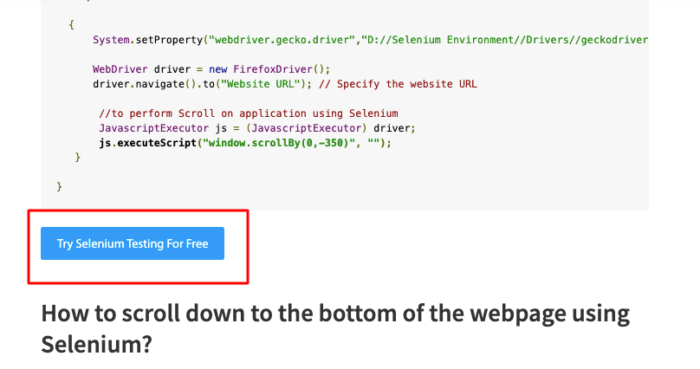





















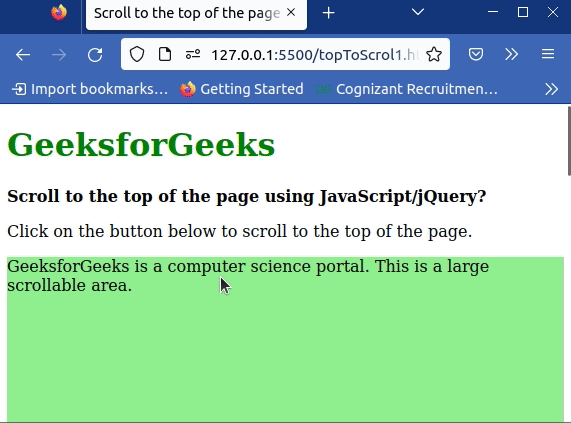




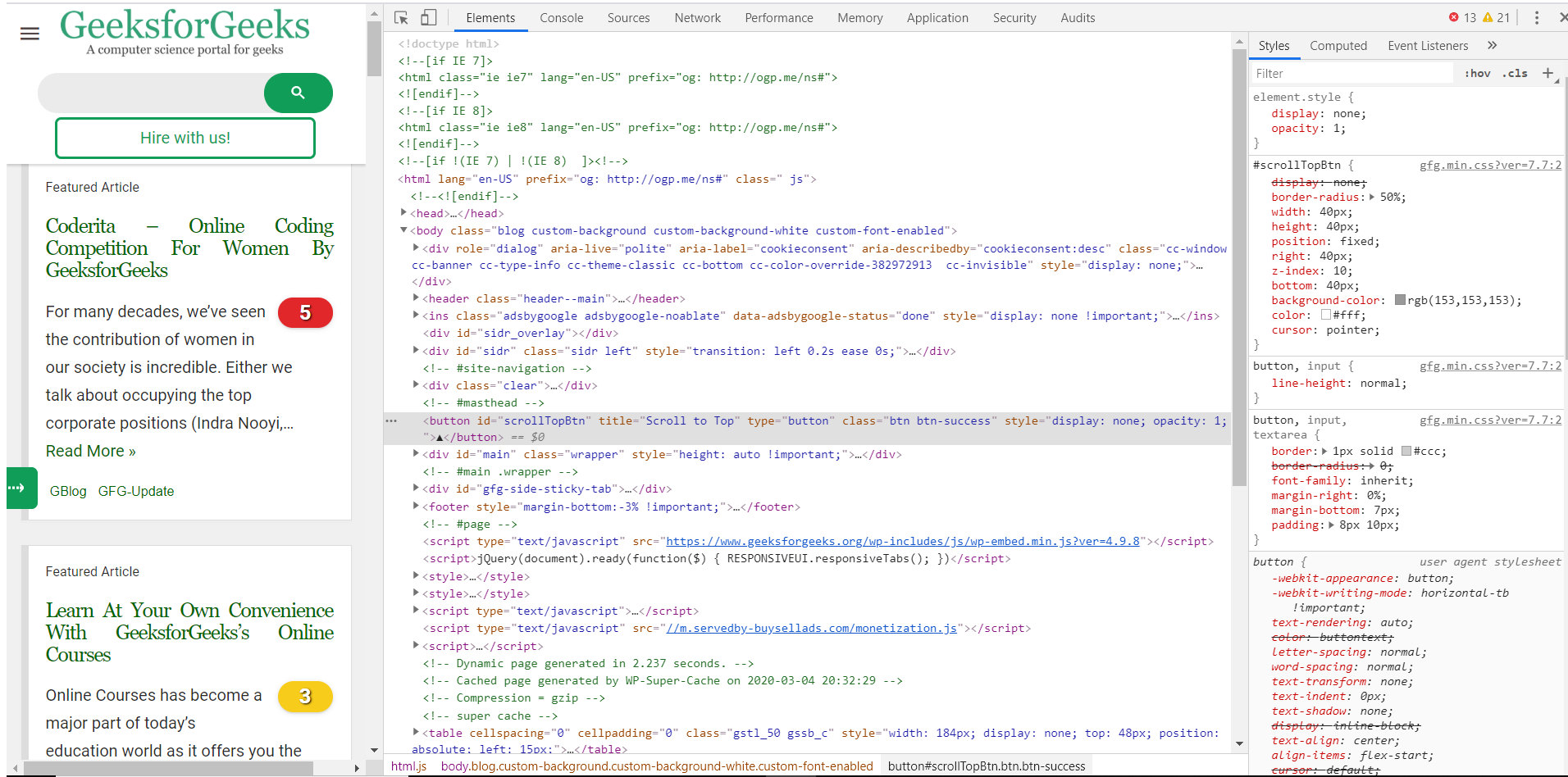



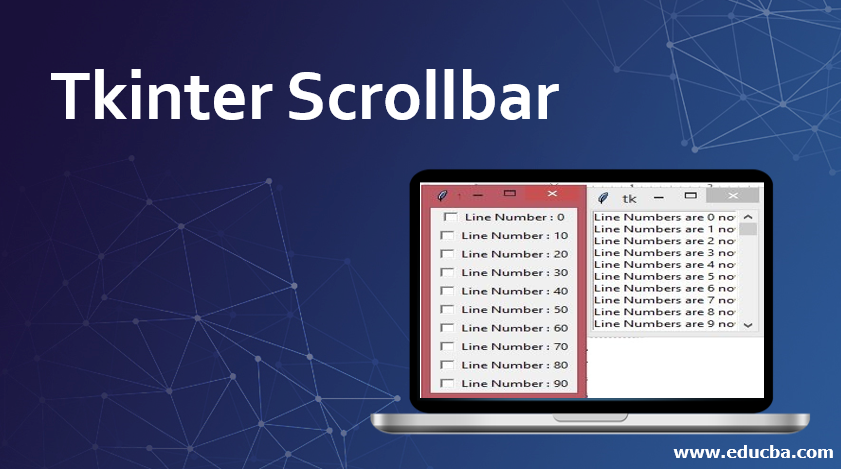






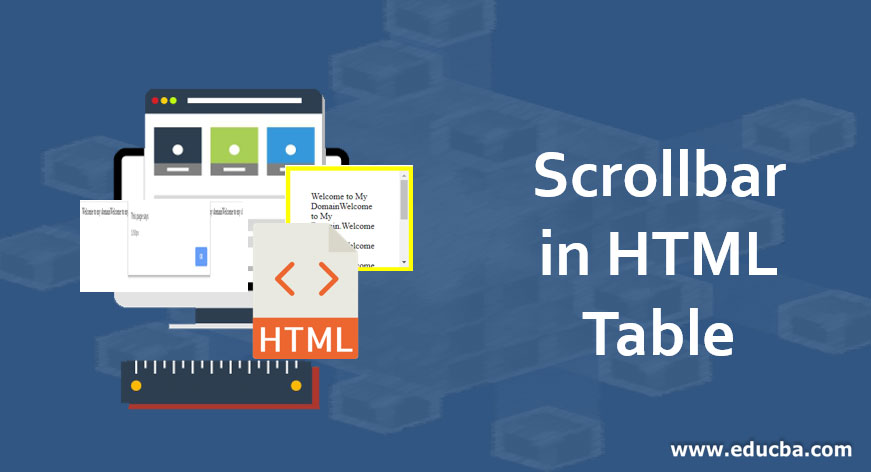
Article link: scroll page selenium python.
Learn more about the topic scroll page selenium python.
- How can I scroll a web page using selenium webdriver in …
- Selenium Scroll Down Webpage – Python Tutorial
- Python Selenium – How to Scroll Down a Page?
- selenium-webdriver Tutorial => Scrolling using Python
- Scroll Web Page Base On Pixel Method Using Selenium in …
- How to Scroll Down in Selenium Python: Step-by-Step Guide
- Scroll Down a Website Using Python Selenium
- How to Scroll to the Top or Bottom of a Web Page using …
See more: https://nhanvietluanvan.com/luat-hoc/